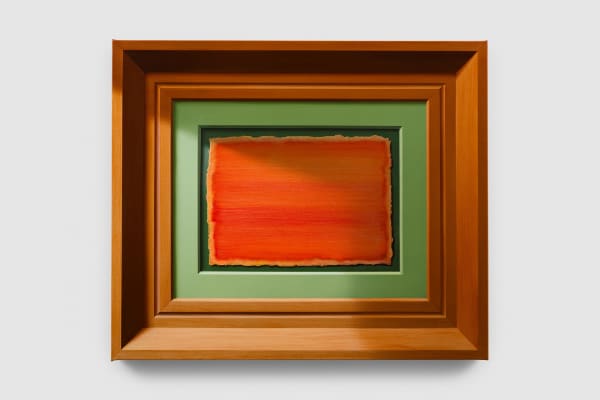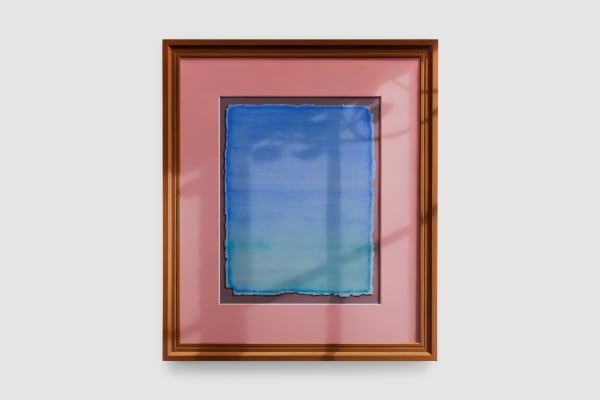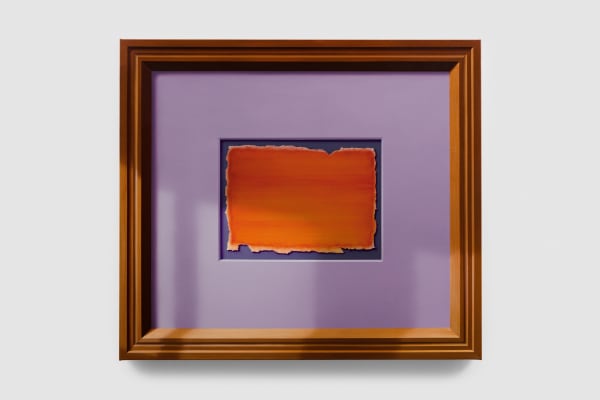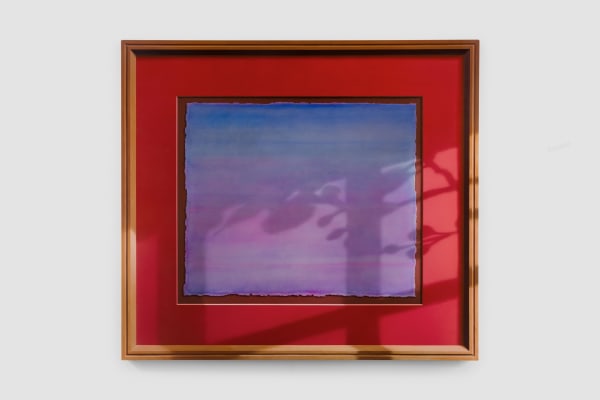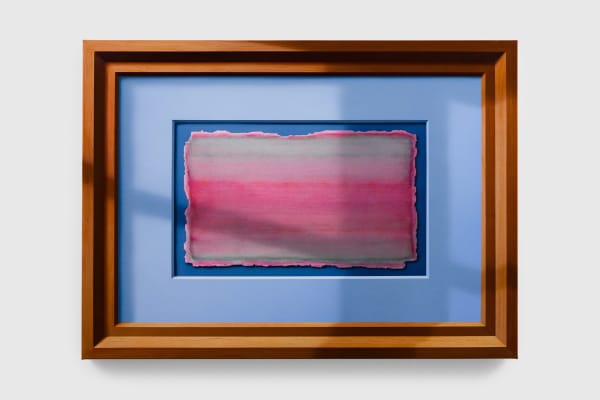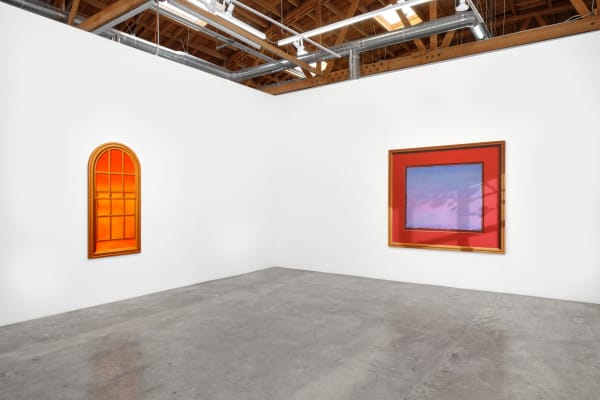Christopher Page: Picturesque
Baert Gallery is pleased to present Picturesque, a solo exhibition of new paintings by British artist Christopher Page. In this series of mostly oils on canvas, the artist draws on the paradoxical qualities of trompe l’oeil to create aesthetic and architectural ambiguities that invite the viewer to interrogate perception, presence and absence.
Picturesque, Page’s second solo show with the gallery, is an exhibition that is not what it first seems. Initially the works might appear to be rather unassuming color field paintings, traditionally framed—natural enough things to expect in an art gallery—with light and shadow cast across their surfaces. On closer inspection it becomes clear that the frames, mountboards and depicted paintings, as well as the light and shadow, are all entirely flat. If the viewer thought they were looking at washy Rothko-esque watercolours on paper, they now realize they are looking at layered and luscious oil painted illusions on canvas.
Intentionally indeterminate, the brooding azure, lilac and crimson color fields at the center act more as ciphers for painting in general, rather than fulsome depictions of specific works-on-paper. Once adjusted to the fact that each painting is a single unframed surface the eye must consider the entire painted expanse as included in the picture. Seeing the ‘frame’, ‘mountboard' and ‘painting’ now as interacting planes of color, the viewer might be reminded of geometric abstraction—the nested squares, say, of an early Frank Stella—a formal approach to painting that dramatizes the fact of the canvas, its flatness and limits. But the virtual depth and delicately rendered surfaces in Page’s works draw the eye in like Baroque trompe l’oeil painting, while the illusory light and shadow draws attention outside of the limits of the canvas, proposing an alternative architectural reality and gesturing towards a world beyond the threshold of the gallery walls.
‘Nature’ haunts these paintings. The fictive shadows not only suggest windows that are not there but, in some works, leaves and branches appear to tap at them. ‘Nature’ is suggested but absent, and doubly so—Page’s leafy templates are drawn not from life but from internet images of houseplants. Here we find deeper reasons for the title Picturesque: not only are these ‘paintings of paintings’ literally picture-like (or picture-esque) but the 18th century Picturesque was an art-historical movement that subjected landscapes to pictorial principles, in which ‘nature’ became an image of itself.
The paradoxes in these paintings deepen the more they are interrogated. The washy, horizontally banded ‘paintings’ that are depicted at the center of each work may appear as liminal skyscapes, and the titles of the works would encourage such a reading—Umbrian Night, Early April, Dawn. Yet here again the viewer is faced with a conundrum: do these titles refer to whatever quality of daylight the depicted paintings portray, or do they refer to the light that appears to spill in through an adjacent window?
The contradictions and deceptions contained within Picturesque speak both to the history of painting and to the visual world we inhabit today. In Page’s work, opposed forms of painting—Modernist abstraction and Baroque illusion—are collapsed together to generate an ambiguous pictorial depth that not only raises questions about truth and falsehood in the painted image, but speaks to the indeterminate depth conjured by the screens we all stare into today.
With Picturesque, Page encourages us to see ourselves seeing. Undeniably self-conscious, his paintings offer themselves up to scrutiny, rewarding the devoted viewer by allowing us to witness the failure of illusion. Brought to the threshold between reality and representation, these paintings disrupt the conventions that direct our gaze and offer us a space for critical reflection on the visual lures that surround us.
Christopher Page (b. 1984, UK) lives and works in Dorset, UK. He received his MFA in Painting from the Yale School of Art and has since exhibited internationally. He has previously exhibited at Villa Lontana, Rome, Italy; Museum of Contemporary Art Storefront, Los Angeles, USA; and has had solo exhibitions at the Instituto Inclusartiz, Rio de Janeiro, Brazil; and Museu de Arte Moderna, Rio de Janeiro, Brazil. Recent solo and two-person exhibitions include Earth Sky Body Ruins (with Clementine Keith- Roach), Ben Hunter, London, 2023; Fading Light in the Picture Gallery, Dirimart, Istanbul, 2022; Knots (with Clementine Keith- Roach), PPOW, New York, 2022; and Shadows & Reflections, Ben Hunter, London, 2021.
-
 Christopher PageLate in The Day, 2024Oil on canvas
Christopher PageLate in The Day, 2024Oil on canvas -
 Christopher PageNovember, Evening, 2024Oil on canvas
Christopher PageNovember, Evening, 2024Oil on canvas -
 Christopher PageLight of Day, 2024Oil on canvas
Christopher PageLight of Day, 2024Oil on canvas -
 Christopher PageEarly April, 2024Oil on canvas
Christopher PageEarly April, 2024Oil on canvas -
 Christopher PageUmbrian Night , 2024Oil on canvas
Christopher PageUmbrian Night , 2024Oil on canvas -
 Christopher PageThe Outside, 2024Oil and acrylic on canvas
Christopher PageThe Outside, 2024Oil and acrylic on canvas -
 Christopher PageAs Daylight Dies, 2024Oil on canvas
Christopher PageAs Daylight Dies, 2024Oil on canvas -
 Christopher PageDawn, 2024Oil on canvas
Christopher PageDawn, 2024Oil on canvas





